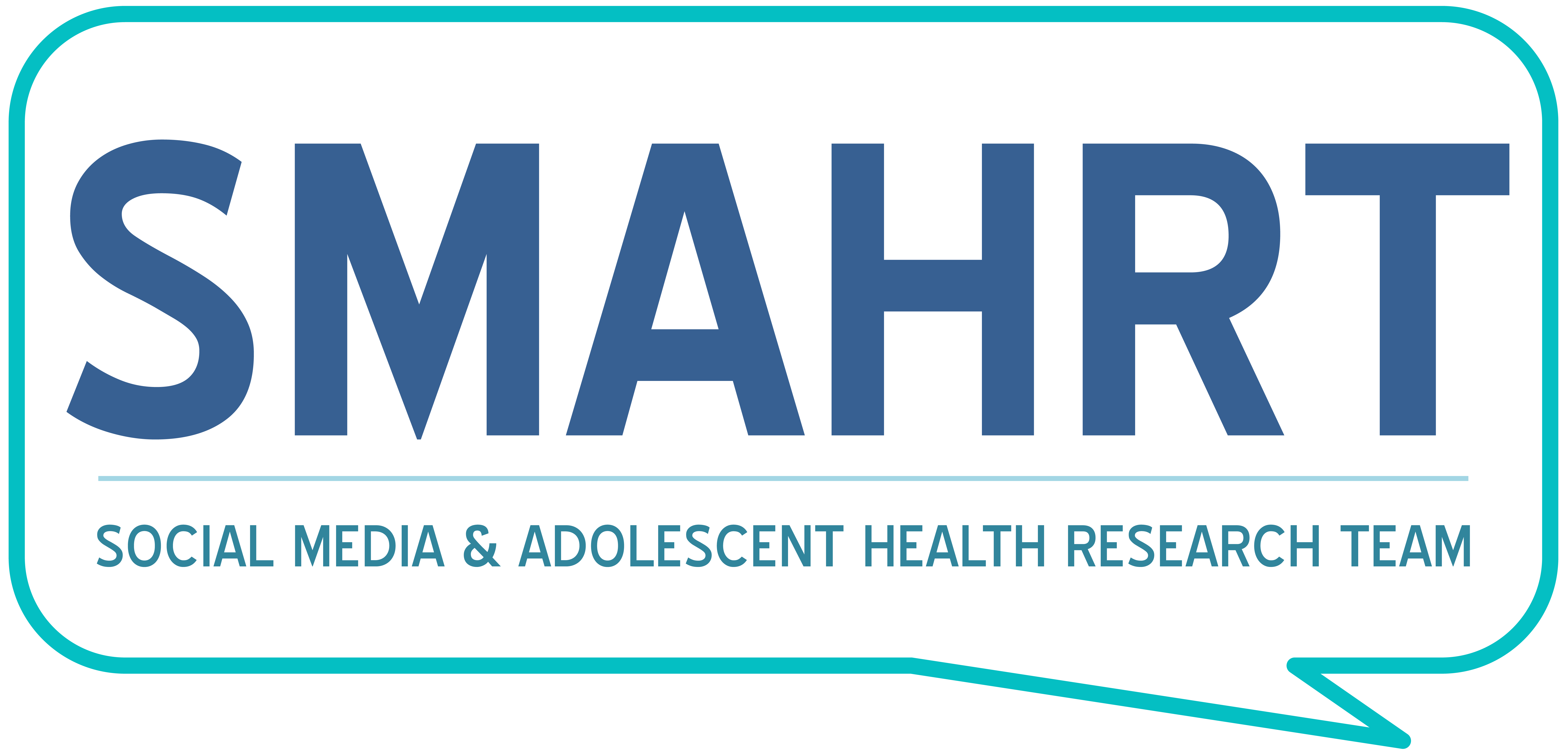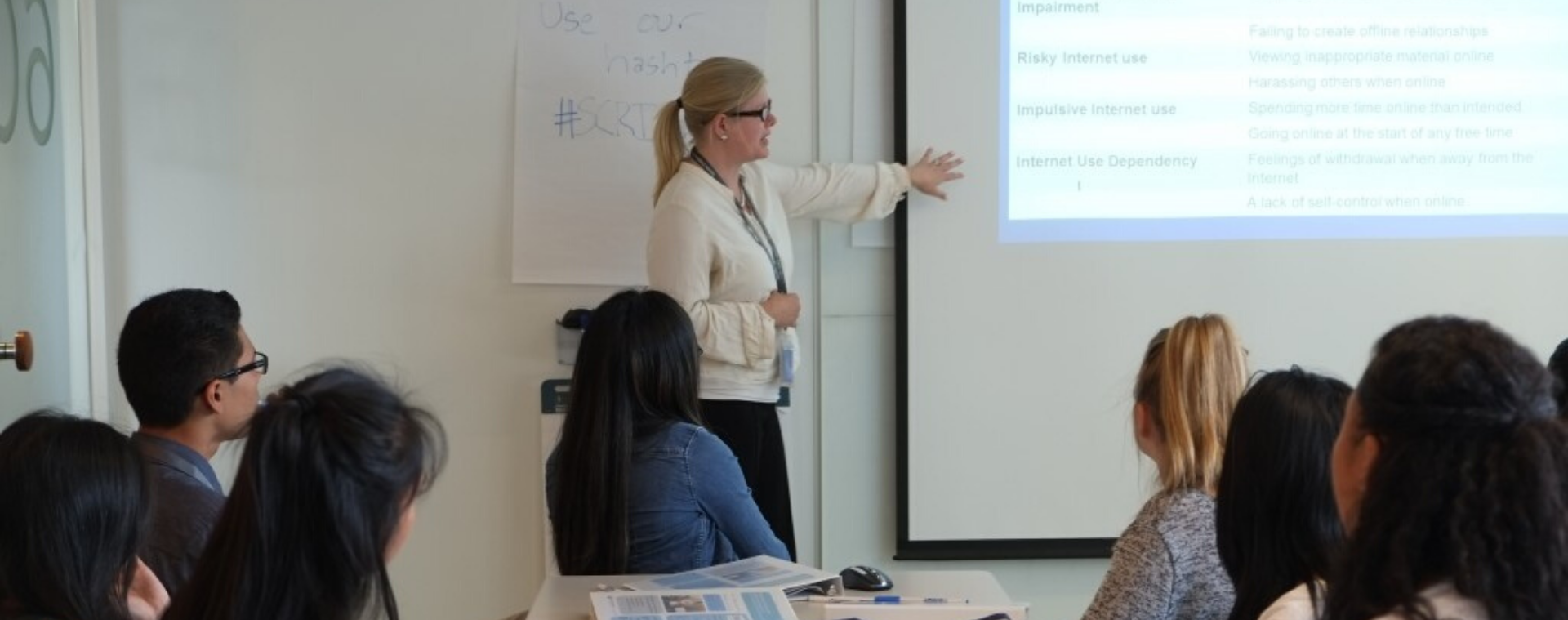Written by: Abby Hommer
This past year I had the opportunity to conduct a secondary analysis, using data from a previous Qualtrics survey conducted by the SMAHRT team. As I was looking over the different scales and measurements used, I came across the FOMO scale. My interest was piqued, as I was reminded of the FOMO I often experienced as a young adolescent.
I started my review of literature and found there was not a lot of research out there specifically focusing on adolescent FOMO on social media.
However, here’s what I did find:
- FOMO (fear of missing out) can be defined as the “pervasive apprehension that others might be having rewarding experiences from which they are absent” (Fabris et al., 2020).
- For those who experience FOMO, it has been associated with increased social media use among adolescents (Beyens et al., 2016).
- It has been found that a decrease in well-being is related to an increase in FOMO for adolescents (Reer et al., 2019).
- Additionally, deficits in psychological needs can increase an adolescent’s sensitivity to FOMO, which in turn may drive adolescents towards more social media use as a self-regulation strategy (Beyens et al., 2016).
I found that how FOMO relates to different types on interactions on social media platforms was missing. The purpose of the study was to assess the possible relationships between FOMO and technology interactions, age, and gender. I hypothesized, that a higher score on the FOMO scale will predict higher social media use for social interaction (third subscale of ADTI) score on the ADTI scale.
The survey data was from 2019 and was collected from participants between ages 12-17. I focused on two scales, the Adolescents Digital Technology Interactions scale (ADTI) and the FOMO scale. The Adolescents’ Digital Technology Interactions and Import (ADTI) scale can be used to assess the quality of specific technology interactions. ADTI has been used in previous studies to assess relationships between technology use and mental health. The ADTI scale produces an overall score that represents a summary score of adolescents’ perceived importance of their interactions with technology.
For the ADTI and FOMO scales, I conducted a two-tailed Pearson correlation to assess the possible relationship between the two factors. Additionally, I conducted an independent sample t-test to assess the differences between FOMO among genders Finally, I conducted an ANOVA test to assess the differences between FOMO and each age.
Technology for social connection had a moderate positive correlation with FOMO. However, the overall scores on the ADTI scale (overall importance of technology) had a stronger correlation. In previous studies focusing on FOMO, females had been found to report higher FOMO. There were significant differences on the FoMO scale between age 14 and 17
It was found that FOMO positively relates to the level of importance of using social media for social interactions and connections. This means adolescents who experience FOMO could prioritize using social media for social connection rather than creative expression, self-expression, etc. Further research should assess how FOMO differs across different social media platforms. In the past, Facebook has had the most data collected regarding feelings of FOMO, and researchers should look to assess if FOMO varies across social media platforms. FOMO is still a relatively new operationalized variable in adolescent research and should continue to be looked at concerning social media. Doctors should continue to make suggestions to parents about adolescent FOMO, specifically for those who use social media as a self-regulation strategy, to avoid social media addiction.
It was such an informative and rewarding experience, being able to conduct my own research and present it at the undergraduate research symposium. It was a learning curve, as this was my first time conducting a secondary analysis. Specifically, I had a lot to learn when it came to data analysis since that is not my strong suit. This was also my first-time running tests, like the ANOVA and Pearson Correlation. I also ran into some issues with missing data, and I had to run an imputation that replaced the missing values. However, it was super exciting to get results that were significant, especially since this was my first study I’ve conducted. I am so excited to continue with my research on FOMO and to see where it takes me in the future!


